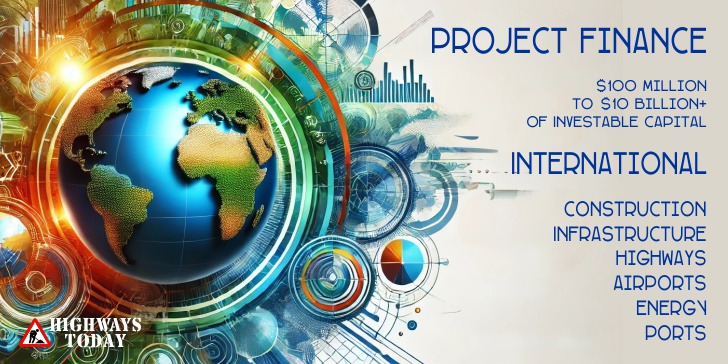Resilient Growth and Public Financial Management in the Philippines
Public Financial Management (PFM) reform in the Philippines is not just a matter of policy—it’s a matter of survival. In a country ranked as the world’s most vulnerable to natural disasters, robust financial systems are critical to managing both immediate crises and long-term resilience. The need for comprehensive reform, digital transformation, and international alignment has never been more urgent.
Hindered by fragmented policies and siloed systems, the Philippines’ financial management structure faces a steep climb. But with growing political will, support from development partners, and lessons learned from previous reforms, the country has a unique opportunity to accelerate change.
Public Financial Management and the Philippines
The evolution of PFM in the Philippines dates back to the restoration of democracy in 1986. Early reforms introduced frameworks like the Medium-Term Expenditure Framework (MTEF) and the Government Procurement Reform Act, aiming to enhance budgeting and accountability. However, progress has been slow and fragmented, with significant challenges arising from a piecemeal approach to implementation.
By 2010, the government doubled down on PFM reforms with initiatives like the Budget Reform Program and the creation of the PFM Committee. These efforts culminated in the development of two reform roadmaps, covering 2011 to 2016, aimed at streamlining financial systems. Yet, despite these strides, only four out of eleven strategic goals were fully realised during this period.
Several factors contributed to this shortfall. Chief among them was a siloed approach that left ministries working in isolation. Manual procedures remained the norm, and inefficiencies plagued the system, leading to delays, excessive administrative workloads, and gaps in the overall budget and project cycle.
The result? Despite a clear understanding of what needs to be done, the Philippines continues to struggle with coherent, cohesive implementation.
Comprehensive Public Financial Management Reform
For the Philippines to reach its goal of becoming an upper-middle-income country—and to meet the United Nations’ Sustainable Development Goals (SDGs)—a comprehensive, inclusive, and resilient financial management system is essential. Recognising this need, the government has laid out the Public Financial Management Reforms Roadmap 2024–2028, a blueprint designed to push the country toward fiscal efficiency and long-term resilience.
The 2024–2028 roadmap introduces several key components:
- Digital Transformation: Embracing modern technologies will allow for the automation of financial processes, reducing the reliance on outdated, manual procedures.
- Inclusive Governance: By involving PFM practitioners at all levels of government, the reform process aims to create a system that’s responsive to both national and local needs.
- Integrated Financial Management Information System (IFMIS): A centralised system designed to streamline financial reporting, budgeting, and procurement across ministries, reducing inefficiencies and promoting transparency.
These reforms aren’t merely aspirations—they’re essential to achieving the country’s broader socio-economic goals as outlined in its 25-year vision, AmBisyon Natin 2040, and the Philippine Development Plan (PDP) 2023–2028.
ADB’s Role in Transforming Public Financial Management
Enter the Asian Development Bank (ADB). Recognising the critical importance of governance and institutional capacity in sustainable development, the ADB has stepped in as a key development partner in the Philippines’ PFM reform journey.
In particular, ADB is funding a three-phase approach to implementing an inclusive and comprehensive Public Financial Management reform plan.
Phase 1: Stocktaking and Roadmap Development: The first phase involves a thorough review of past reforms, identifying gaps, and developing a new roadmap. This process has been informed by feedback from over 1,100 PFM practitioners across national, subnational, and autonomous agencies. Their insights, combined with the technical expertise of senior government officials, have shaped a reform strategy that’s both ambitious and grounded in real-world challenges.
Phase 2: Multistakeholder PEFA Assessment: The second phase will see the Philippine government undergo a Public Expenditure and Financial Accountability (PEFA) assessment in 2024. This assessment, led by ADB, will cover areas such as disaster resilience, gender equality, and climate preparedness. The goal is to measure the country’s financial systems against international standards, identifying gaps and opportunities for improvement.
Development partners like the World Bank, United Nations Development Programme (UNDP), and others have also been involved in this phase, ensuring a harmonised approach to PFM reform. The PEFA++ assessment, which incorporates climate, gender, and disaster-resilience metrics, will provide the government with a detailed picture of where improvements are needed—and how best to achieve them.
Phase 3: Midterm Review and Action Plan: The final phase will take place in 2025, with a midterm review of the 2024–2028 roadmap. Based on the findings from the PEFA assessment, the government will refine its reform strategy, creating a detailed action plan that addresses both national priorities and international best practices.
From Siloes to Synergy
One of the key takeaways from past PFM reforms is the importance of coordination. Without a multistakeholder approach, previous reforms fell short. Ministries worked in siloes, with little communication or collaboration. This led to duplicate efforts, incompatible systems, and an overwhelming administrative burden on PFM practitioners.
However, there’s now a strong recognition among senior officials of the need for digitisation and systemic change. The appetite for reform is real, and the will to strengthen financial systems is stronger than ever.
At the same time, development partners have learned that their support must be streamlined. In the past, overlapping areas of concern led to redundant investments, reducing the overall impact of development assistance. Moving forward, better coordination between development partners and the Philippine government will be essential to ensure that every peso spent on PFM reform delivers real results.
Building Trust and Empathy
Another lesson from previous reforms is the importance of involving PFM practitioners at every level. In the past, national policies were often seen as disconnected from local realities, leading to frustration and disengagement among subnational agencies. By creating a more inclusive process—one that involves listening to the concerns and aspirations of PFM practitioners—the government can build trust and ensure stronger buy-in from all stakeholders.
This shift toward a more empathetic approach was evident in the subnational workshops that informed the 2024–2028 roadmap. During these sessions, senior officials listened closely to the challenges faced by PFM practitioners, incorporating their feedback into the reform planning process. The result is a roadmap that not only addresses technical issues but also speaks to the social, emotional, and functional dimensions of PFM work.
A Country-Led Approach
Finally, it’s important to remember that PFM reforms must be country-led. While international standards and best practices provide valuable guidance, they must be tailored to the local context. The Philippines’ three-phased approach to PFM reform allows for this kind of contextualisation, ensuring that interventions are relevant, effective, and sustainable.
As the country moves forward with its PFM reform agenda, the involvement of local stakeholders will be key to ensuring that reforms are not only technically sound but also responsive to the needs of the people who rely on them.
A Strong Foundation for the Future
In the end, the Philippines’ journey toward Public Financial Management reform is about more than just improving financial systems. It’s about creating a foundation for long-term resilience, sustainable development, and inclusive growth.
With the right tools, the right partners, and the right approach, the country is well on its way to building a financial management system that can withstand the challenges of both today and tomorrow.





















